
Sitka
June 20-23, 2004
Sitka is probably the most historic town in southeast Alaska. It
was the Russian capital from 1808 until the transfer of sovereignty to the U.S.
in 1867. It then served as the territorial capital until 1906, when the capital
was moved to Juneau.

St. Michael's Cathedral in Sitka, built in 1848, is the oldest
Russian Orthodox church in the U.S. The church burned in 1966. Fortunately, they
had removed the plans for the original church from the dome and sent them to the
Library of Congress only 3 months before the fire. Consequently, they were able
to rebuild the church (shown here) as a replica of the original. Ninety five percent of the
icons were saved and placed in the new church. St. Michael's Cathedral is an
active church with 55 members; 95% of those are native to Alaska, primarily Tlingit. The services typically last two hours. There are no pews; the
worshippers stand or kneel the entire time.
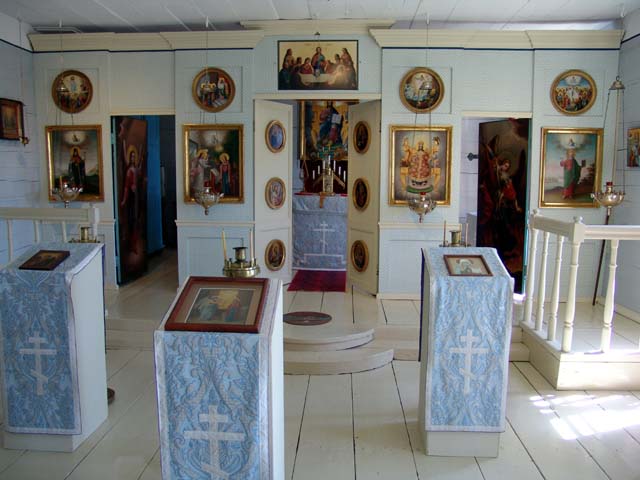
The Russian Orthodox bishop's residence, built in 1843, is
the oldest surviving Russian structure in the U.S. This is the chapel in the
residence; the style is similar to that of the church (interior pictures of the
church were not allowed). The Russian Orthodox cross is rather different from
the crosses of western Christianity. It has three cross-bars. The top bar
symbolizes the inscription above the crucified Christ, and the longer middle bar
represents the bar on which his hands were nailed. The lower bar is his
footrest, and also symbolizes the two thieves that were crucified with him. It
is slanted to represent one thief going to heaven and one heading the other way.

The Naa Kahidi Dancers put on a very entertaining performance illustrating the culture and history of the Tlingit people. For our performance the dancers were mostly children and youth, with a couple of adults. The theatre is a modern rendition of a traditional clan house.
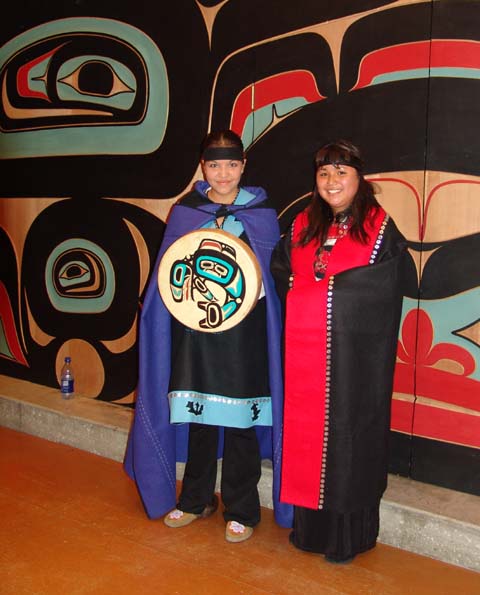
Two of the dancers in their traditional costumes.
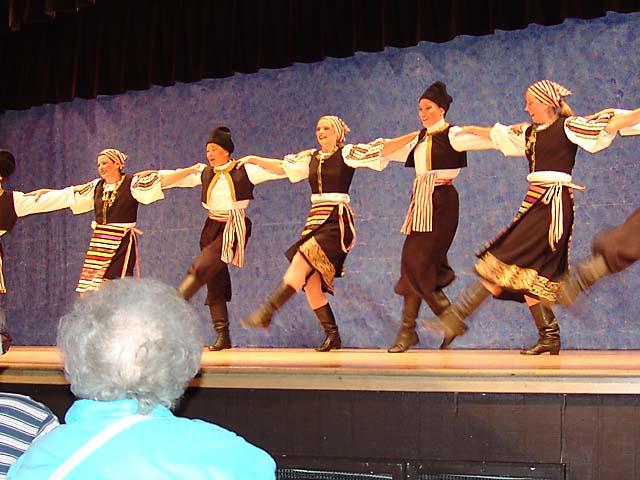
The New Archangel Dancers remind visitors of Sitka's Russian
heritage. The group is composed only of women. When the group was formed in
1969, they asked men to join them, but got no takers, so they went ahead anyway,
with women dancing the male roles. After the group became successful, some men
wanted to join the group, but the answer has always been, "Sorry, this is a
women-only group". The performance was very energetic and entertaining.
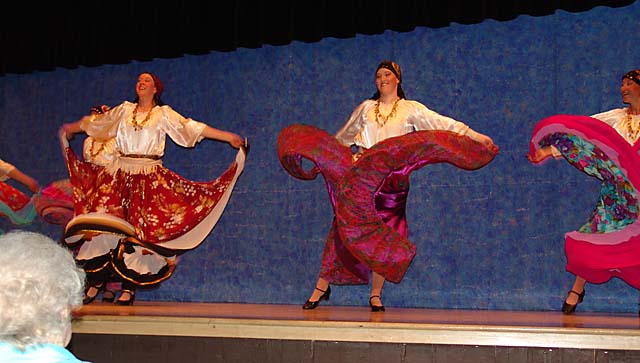
A gypsy dance.
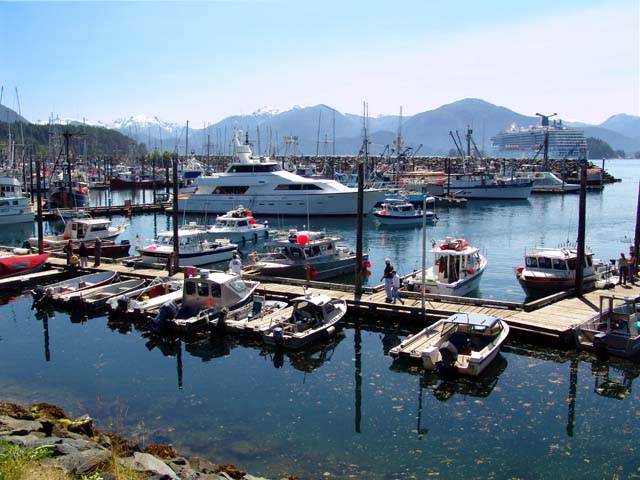
One of the Sitka harbors, with a swanky yacht in the middle and
a large cruise ship in the background. Sitka does not have docks capable of
handling the large cruise ships, so they have to anchor off-shore, and the
passengers are brought onshore using small boats.
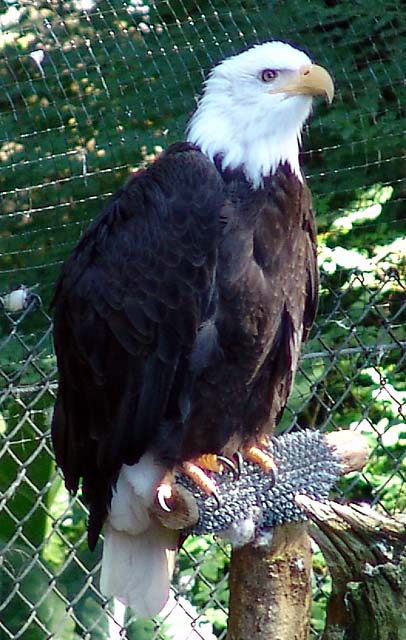
The Alaska Raptor Center in Sitka is a "hospital" for raptors, mainly eagles, that have been injured. About 40% of the eagles are returned to the wild. The others cannot be sufficiently rehabilitated to survive in the wild, so they are placed with zoos in the U.S. The center provided an opportunity to see eagles "up close and personal".

In many places in southeast Alaska it is hard not to see wild
eagles, either sitting in trees or soaring over the water. This one was using
the lights on the ferry dock as a perch for fishing.
Next, we go back to Juneau, and then on to Haines.